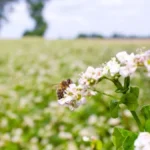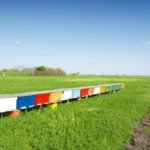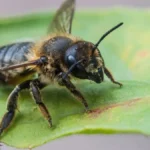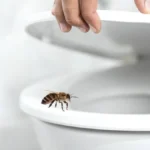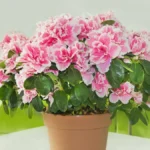Planting buckwheat for honey bees is a lot of fun, and even a relatively small patch can actually make a difference to a beehive or two. If you plant an acre or more, you are looking at actually producing a crop of honey from this. Buckwheat is a fun crop to grow and really makes a difference to your bees in the area.
How Good Is Buckwheat For Honey Bees?
Planting buckwheat for honey bees is a great idea. Buckwheat is an exceptional crop for honeybees, and many other bee pollinators too. It is a rapidly growing plant that produces nectar in the morning. The longer your morning is, the more nectar you will get. It is quite weird how this happens, but in my area, if I aim to have the buckwheat flowering for early summer, I find that the bees work it from before sunrise to about 10 am, after which you hardly find a bee on the flowers. Before that, the flowers are crawling with bees, and the whole field buzzes like a big air conditioner.
If you manage to get the buckwheat to flower in mid-summer, the bees will still work it from sunrise until about 10 am – but they get a few more hours of work in due to the longer photoperiod. This makes a big difference to the benefit they derive from the crop.
How Long Does The Buckwheat Plant Take To Produce Flowers?
This plant is insane. It grows so fast you actually can nearly hear it growing. My experience with this plant is that it is about two months from seed to seed. In other words, you plant it, it grows, flowers and is ready to harvest in two months, if not a little more. This will depend on your area and climate some areas require a bit longer. Maybe a week or two more if your soil is cold.
I normally time planting buckwheat for honey bees just after the last frost, and it will be up in a few days. After three weeks you have a plant that is so big it actually shades the ground and kills weeds. After 6 weeks or so the first flowers appear. At this point, I normally have to give it a good watering as we get an early summer drought. Giving it the equivalent of an inch of water, every week ensures maximum nectar production. I water late afternoon, as this is when the bees are not on the plants, and it gives the plants time to rehydrate and get ready to produce nectar the next morning.
Peak flowering happens around the second week of flowering. At this point, you will have a crazy mess of bees on the flowers. This is one of the few crops where I have been stung by bees working the flowers. They go so crazy that if you walk around in the flowers you can get stung – probably by accident, but the more bees, the greater the chance of an accident. You will see when you grow this plant – it literally crawls with bees just after sunrise.
Here is a nice detailed description of Buckwheat growth in New York State – I find the observations are a bit different from what I have seen, but are probably a good guide for what to expect in parts of the US.
Planting buckwheat for honey bees in succession planting is another option – if you plant one field to the crop and two weeks later plant the next field. You will find that after the first field is going out of flower the next field is going into flower. After you harvest the first field, if you just run a rotavator over it, you will actually get another crop of buckwheat coming up from that field!! The buckwheat makes a great soil feed – almost a green manure of sorts, and it is very effective at bringing phosphorous out of the soil and making it available to other plants.
Warning: Buckwheat Is A Real Pest
I love planting buckwheat for honey bees. I persuaded a friend to grow some about two decades ago – and he grew it once and it is still coming up in his fields. This plant produces a lot of seed, but it also drops a lot of seed – this seed forms a seed bank in the ground, and over time you get these hardy sneaky varieties that develop that know how to come up and flower and seed and become weeds in your field. In essence, it becomes a recurring wildflower in your fields after you grow it.
If you commit to planting buckwheat for honey bees once, be aware that you have committed to growing it a bit forever. Much like amaranth, once you have it in your fields, you will never get rid of it. Well, if you farm with herbicides you can, but I think if you are a beekeeper, and have your head screwed on the right way you know that herbicides and land health do not mix.

This is a handful of seeds that I harvested from buckwheat weeds in my garden. I planted buckwheat 8 years ago to stabilize some loose soil on a slope – and this stuff still comes up all over the garden now!!
Learn more about: Wildflower Meadow Instead Of A Lawn
Is Buckwheat Good For Pollination?
I often get asked if buckwheat is a good pollinator. This means we need to clarify something.
A bee is a pollinator that pollinates flowers. A flower gets pollinated and produces seeds. Hence buckwheat is not a good pollinator. Bees are! But yes, buckwheat is a good source of pollen. And bees love being good pollinators of buckwheat. Buckwheat itself is not self-pollinated – in other words, it needs a bee or some factor to move pollen from one plant’s flowers to another. So buckwheat is not self-pollinated and is therefore dependent on pollinators such as bees.
How Much Honey Can We Expect From An Acre Of Buckwheat?
If you were to work on a rough thumb suck figure an acre of buckwheat should allow a single hive to produce about 150 pounds of honey. This is a rather optimistic figure, and it could be less than that, or, in rare cases more. If you are aiming more for seed production than honey production, you can up the bee count to three or so hives per acre, which will reduce the overall honey production, but increase seed production.
In my personal experience, I have planted a few half-acre patches, with planting spaced out by a week or two between plantings. This produced a much longer honey flow and our hives did very well. Buckwheat honey is a bit of an acquired taste – it is rich and dark and heavy. Planting buckwheat for honey bees is not only about the honey – it is also about bee health. Buckwheat for bees ensures strong healthy hives. The pollen and nectar from this crop seem to really help the bees be healthy and strong. This is my main reason for planting buckwheat for honey bees.
Planting buckwheat for honey bees is a great idea. Buckwheat for bees is like candy for kids. They love it! It produces a good honey flow and pollen flow, so why not try. It is so easy to grow. If you enjoyed this article please share it.
Read more about: The Best Wildflowers For Honey Bees
FAQs
[rank_math_rich_snippet id=”s-0b07d961-a237-4e22-a23c-13f15da47d9c”]

Dr. Garth A. Cambray is a Canadian/South African entrepreneur and beekeeper with 28 years of experience in apiculture and specializes in adding value to honey. His Ph.D. research developed a new advanced continuous fermentation method for making mead that has resulted in a number of companies globally being able to access markets for mead. His company, Makana Meadery, exports honey mead to the USA where it is available to discerning connoisseurs. He has also developed technologies to commercially manufacture organic honey vinegar in Zambia for export globally. He holds a few patents globally in the ethanol industry and believes in technology and knowledge transfer for human development and environmental sustainability. One of his proudest achievements is the fact that the wind farm he started at one of his old apiary sites has essentially made his hometown carbon neutral.

